Restoring a 1967 Bedford VAL 14 outside broadcast unit
Posted by Chris Graham on 5th April 2024
Peter Simpson tells the story of a rather special 1960s Bedford VAL 14, its time in television and its new life in preservation.

The Broadcast Equipment Conservation Group’s newly-restored, 1967 Bedford VAL 14 Outside Broadcast Unit.
Last year, Classic & Vintage Commercials visited the Broadcast Equipment Conservation Group’s new museum at Hemswell, in Lincolnshire, and ran a feature about its wonderfully restored Southern Television Outside Broadcast Unit. That, though, isn’t the only ‘OBU’ in this fabulous collection, and another former ITV vehicle is now nearing the end of a full restoration.
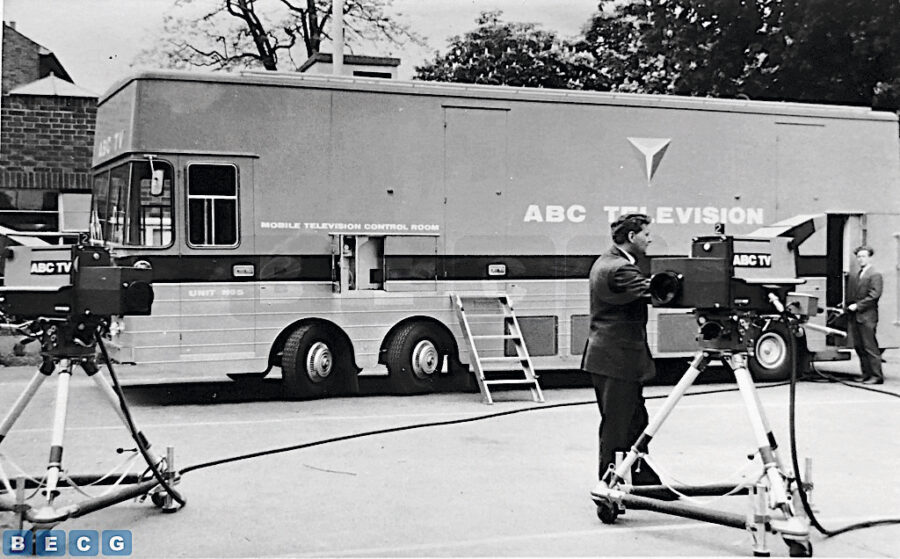
Brand new in 1967, and about to enter service with ABC TV which, at the time, held the ITV franchise for weekend broadcasting in the Midlands and North.
Like ‘Southern’, GNF 951E is built on a Bedford VAL 14 six-wheel chassis – normally used, of course, for buses and coaches. It’s one of three similar vehicles ordered by ABC Television in 1966. ABC also ran the ABC cinema network, and held the weekend ITV franchise for the Midlands and Northern England from 1956 to 1967 – the ITV companies generally tended to be rather more forward-thinking than the BBC. This trio were certainly state-of-the-art for the time, with new features including a longitudinal layout similar to the control gallery in TV studios (previous OBUs had been arranged with car- or bus-like back- and forward-facing seats), all-transistor operation and separate compartments for sound, production and engineering.
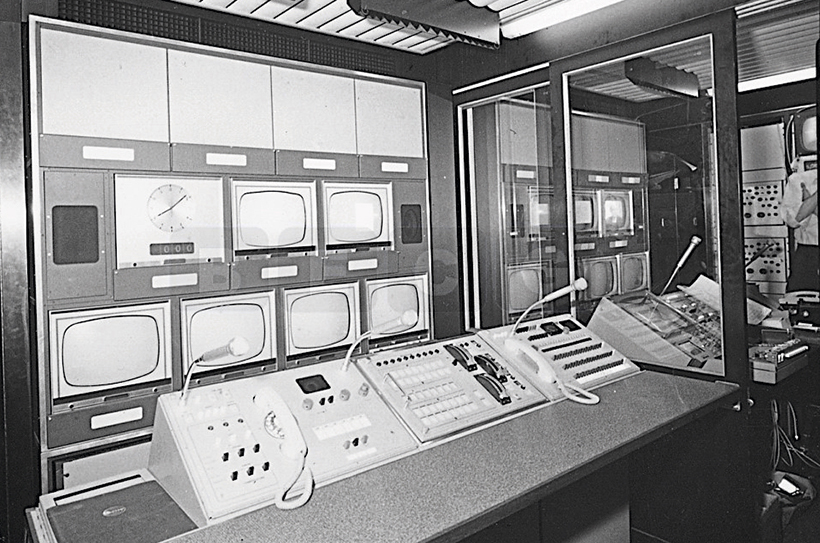
The original black and white production area. Six screens for six cameras.
With a unit of this kind, the actual vehicle comprises only a relatively small part of the overall cost; the real investment is all the delicate equipment inside. This, though, means that the vehicle has to be built to a very high standard to provide proper protection and, just as importantly, is properly-soundproofed and delivers a working environment that’s as comfortable as possible. The bodies, built by Road Transport Services of Hackney, were double-skinned in Duralumin with foam insulation between, and the interior was fully air-conditioned using three separate air-conditioning units.

Following transfer to Thames TV, GNF was based in the London area. It’s seen here in Threadneedle Street in the heart of the capital’s banking area.
Surprisingly speedy
The mechanical specification included a Leyland 400 diesel engine. Diesel power was new for OBUs and possible because the extra harshness/vibration of a diesel was fine in a transistorised vehicle, but could have shaken valves excessively. Transmission was via a Turner five-speed gearbox plus an air-operated, two-speed rear axle. All of which gave the unit a top speed of over 65mph although, with the weight it was carrying, it would probably have taken a very long time to reach that.

Epsom Downs on Derby Day was probably something of a regular ride out during the 1970s.
Slightly more worryingly, given that Bedford VAL brakes were never exactly brilliant, we imagine stopping the beast from that sort of speed would have been interesting, despite compressed-air servo assistance and the presence of an additional mechanical transmission brake operating on the propshaft. Power-assisted steering completed the mechanical set-up.

In 1985 it was acquired by Sony, and converted for use as a High Definition TV demonstration vehicle. This is that conversion underway.
In terms of kit, the ABC OBUs had Marconi equipment, Marconi being the go-to supplier for broadcast equipment at the time. These OBUs were equipped to operate up to six Marconi MkV Image Orthicon black and white cameras.
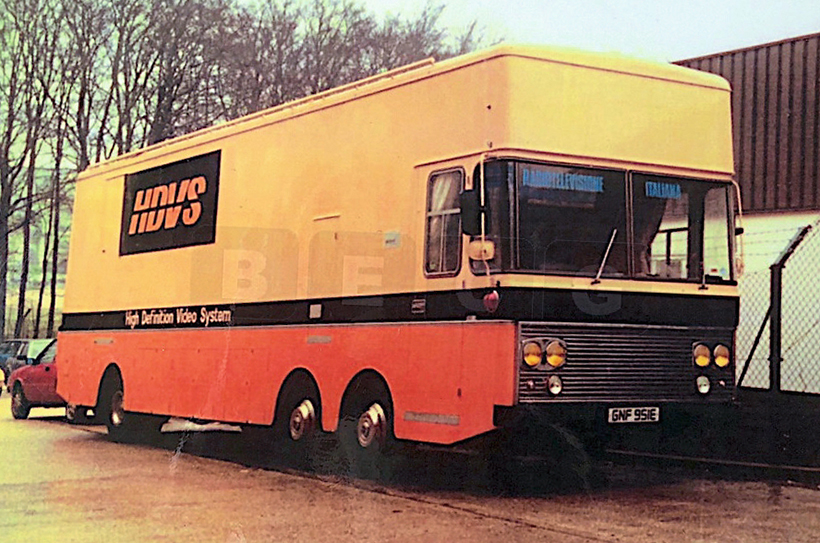
During its time with Sony, the OBU spent six months in Italy, on loan to Radiotelevizione Italiana in the Milan area.
The original impetus for ordering these three OBUs was Britain being awarded the 1966 World Cup and ITV, and realising that its OBU facility was somewhat limited for providing coverage on such a major worldwide event. In the event, however, it seems that only one of the three – registered FNB 460D – was delivered in time to record England’s famous “they think it’s all over” victory at Wembley. GNF 951E was the second of the trio and was delivered in 1967.

In 1992, GNF was converted again, this time into a multi-purpose living, working and travelling unit. This is the living area.
Conversion to colour
However, from 1968, ABC’s two weekend-only areas were replaced by seven-day-a-week providers. ABC then joined forces with Associated Rediffusion to form Thames Television, the weekday London area provider. With that, the other two ABC OBUs were sold to Racecouse Technical Services. GNF, however, went with ABC into Thames, and was almost immediately re-equipped for colour operation. It then remained with Thames until the early 1980s, covering a number of events and special broadcasts including, the 1981 Royal Wedding.

This was the kitchen area, seen from the rear doors, and looking right through.
Shortly after this it was sold to Sony and re-equipped again, this time as a demonstration unit for High-Definition television. This also required some structural changes; most significantly the addition of a heavy-duty frame to support a new, stronger floor. The interior was completely gutted and re-equipped by Glover Webb of Hamble, Hampshire. The unit then spent five years with Sony, including six months in Italy, on loan to Radiotelevizione Italiana in the Milan area.
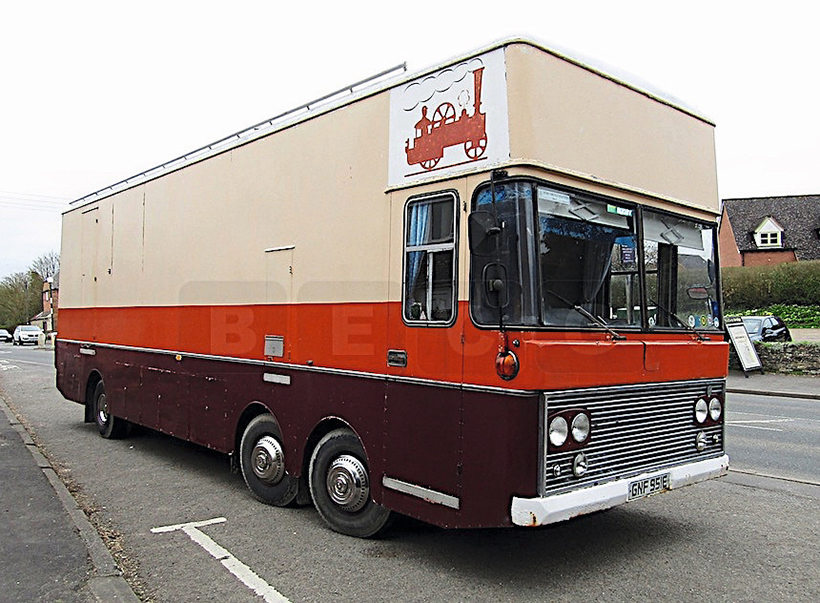
As acquired by the BECG in 2018; note the remaining part of the Great Dorset Steam Fair advertising!
After this, the unit, again stripped of all its innards, spent two years in a role which many readers may have seen it in; an on-site mobile advertising billboard for the Great Dorset Steam Fair. Then, in 1992, it passed to a family based on the Isle of Wight who named it ‘Polybus’ as it was a multi-purpose vehicle which served, variously and sometimes simultaneously as living quarters, workspace, costume store, artist’s studio and gallery and a means of visiting festivals, events and so on. As an OBU, GNF 951E is classified as ‘engineering plant’ and, therefore, MoT exempt. This, however, didn’t apply to the family’s use, so it had to be bought up to MoT standard which, as usual with VAL chassis, meant a fair bit of fiddling and fettling of the brakes along with other work. The interior was also modified and a pair of skylights cut into the roof.

Cab area as acquired; not brilliant, but certainly not that bad, either. It’s never had – or needed – a tachograph.
Into preservation
GNF 951E spent 26 years in this role, and it was probably this use which caused it to survive long enough to pass into preservation. This happened in 2018 when it was acquired by the BECG in 2018, with work on its restoration starting in 2020. The interior was pretty-much emptied, though some 19in racking dating from the Sony era has been retained, and the floor strengthening installed by Sony was removed using an angle-grinder. According to BECG Trustee Paul Marshall, once this extra weight was removed, the whole vehicle rose about 2in.
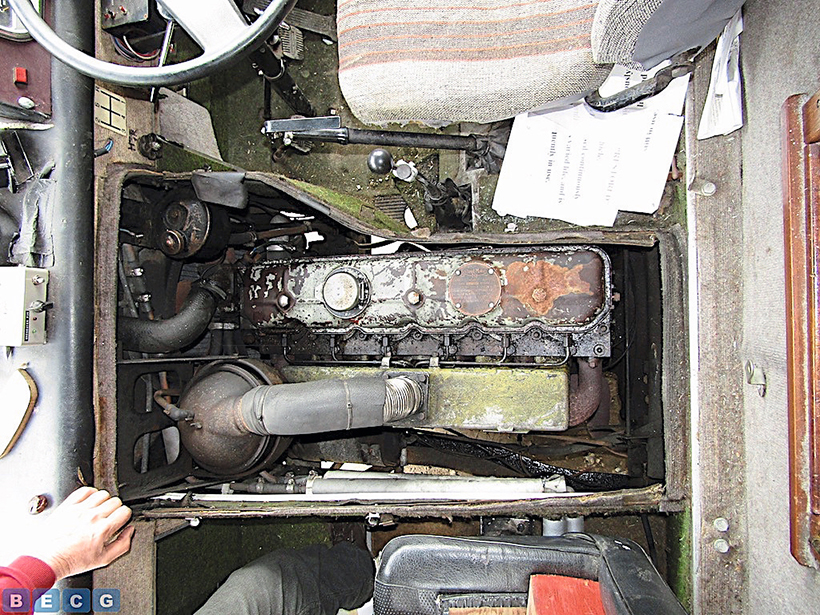
The Leyland diesel engine needed a service and clean-up, but that was about it.
A few external panels needed renewing due to minor accident damage sustained over the years, and the skylights were removed and the original roof reinstated. Overall, however, despite being over 50 years old, the bodywork was in really good order throughout; a testimony to the original quality of construction. This work, and the subsequent repaint, was carried out by Huttons Commercial Vehicles, based in Leicestershire. An interim colour scheme has been chosen consisting of the original ABC livery but with ‘Thames TV’ branding; I’ll explain why in a minute. The front bumper also needed a certain amount of refurbishing.

Removing the extra floor that was added by Sony to take the extra weight of the High Definition Equipment.
On the mechanical side of the project, the gearbox was jumping out of 4th gear so needed rebuilding. The main fault was that one cog within the box was missing a number of teeth, but the strip-down also revealed that a shaft was damaged. After a bit of a struggle to find replacement parts, the ‘box was rebuilt by M&P Transmissions, of Bilston. A replacement brake light switch also proved elusive; in the end the original was rebuilt instead. And, of course, the brakes needed work.
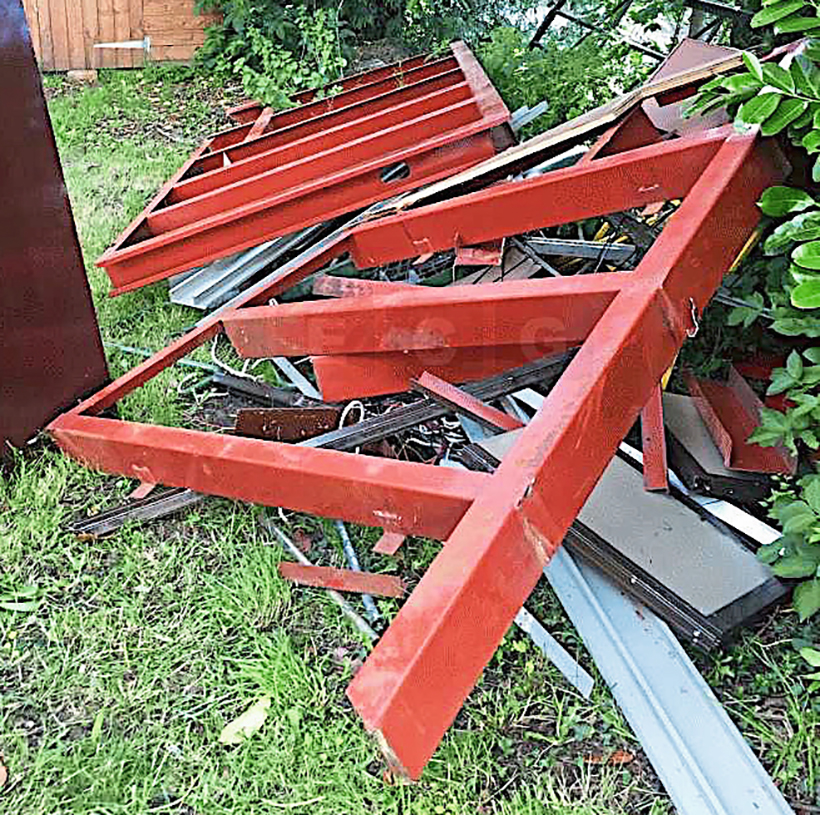
The extra floor had to come out piecemeal and, once it was removed, the weight reduction allowed the vehicle to rise by almost 2ins!
And that, basically, is the story so far. The BECG’s plans for the interior are, however, interesting. Given that this particular OBU was built as a ‘black and white’ unit but converted to colour after a year or so, and also spent time demonstrating High-Definition TV, an ‘original’ renovation wouldn’t really be appropriate. Rather, the plan is to equip it internally in a way which represents all three stages of its life in the TV industry; it will have two black and white cameras, two colour and a single Sony HD one, plus appropriate mixing and editing equipment for all three. The intermediate ABC/Thames livery has been chosen to match that. Work on fitting-out is to start shortly and, unsurprisingly, examples of much of the original equipment or period-correct equivalents are already available from the BECGs extensive collection.
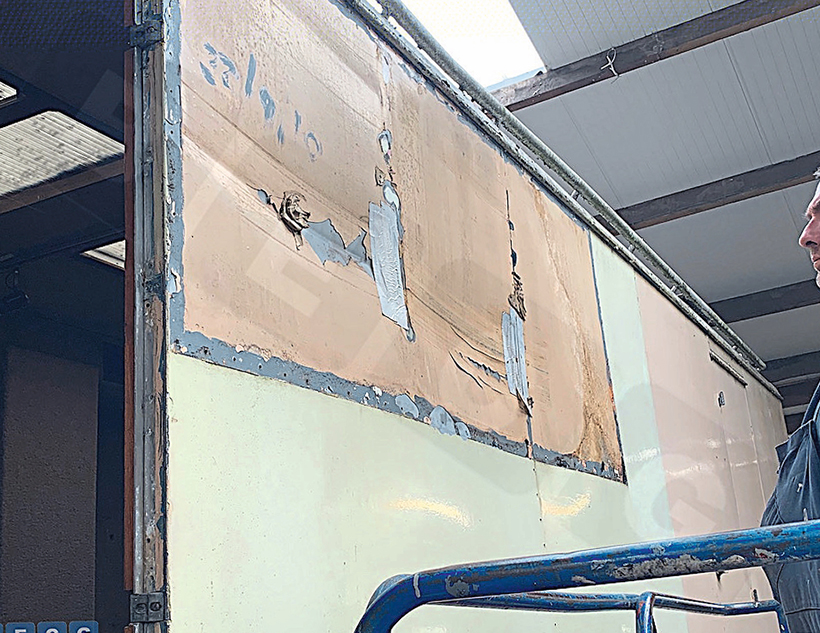
Slight side damage following a collision with a tree that had been covered up, but needed repairing properly.
The Broadcast Equipment Conservation Group
Founded in 2017 by a group of people all with large private collections of historic broadcasting equipment, the BECG formally became a charity in 2020, and is led by six trustees, most of them being working or retired broadcasting industry professionals. In 2021, the group was able to buy the former RAF Sergeant’s Mess at Hemswell Cliff in Lincolnshire, which now houses most of the collection, and is being converted into a Broadcast Engineering Museum.

Front bumper needed localised repairs and general straightening.
The BECG and BEM are now members of the Association of Independent Museums.
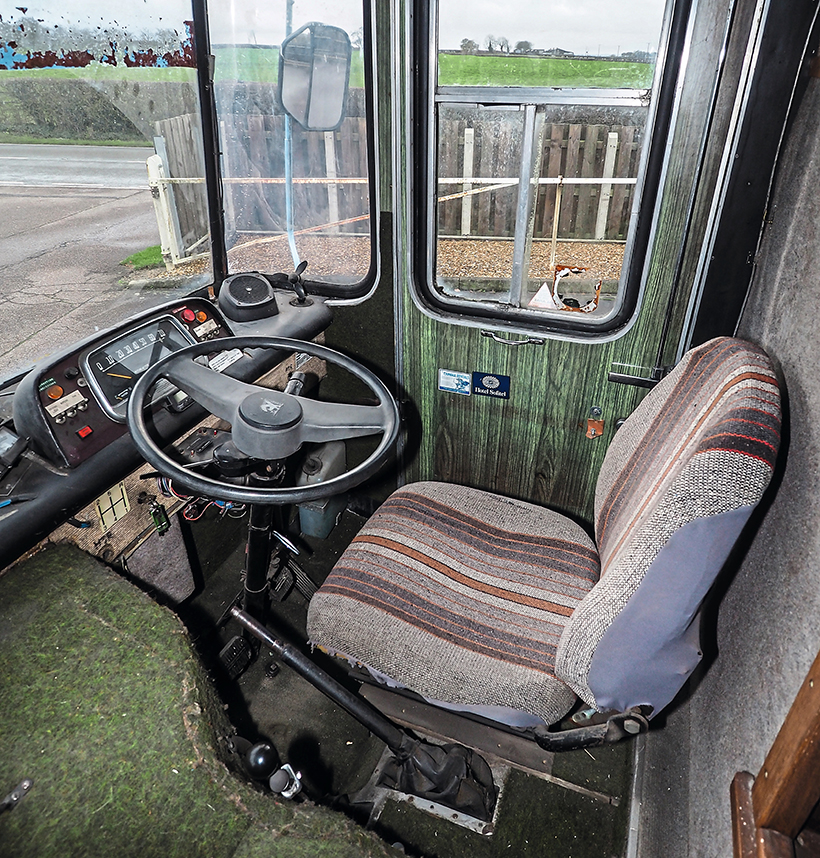
The cab. Power steering was an option but fitted, and improves the driving experience significantly.
At present, the museum is open only on special occasions, the next being on May 25th-26th, between 11am and 4pm. The museum is at 41 Capper Avenue, Hemswell Cliff, Lincolnshire DN21 5XS – access from the A631 following the primary school signpost, not the one to the antique centre. We should probably mention, though, that Hemswell Antique Centre is Britain’s biggest, and is also well worth a visit, and may provide ‘alternative entertainment’ for those less interested in vintage broadcast vehicles and equipment!
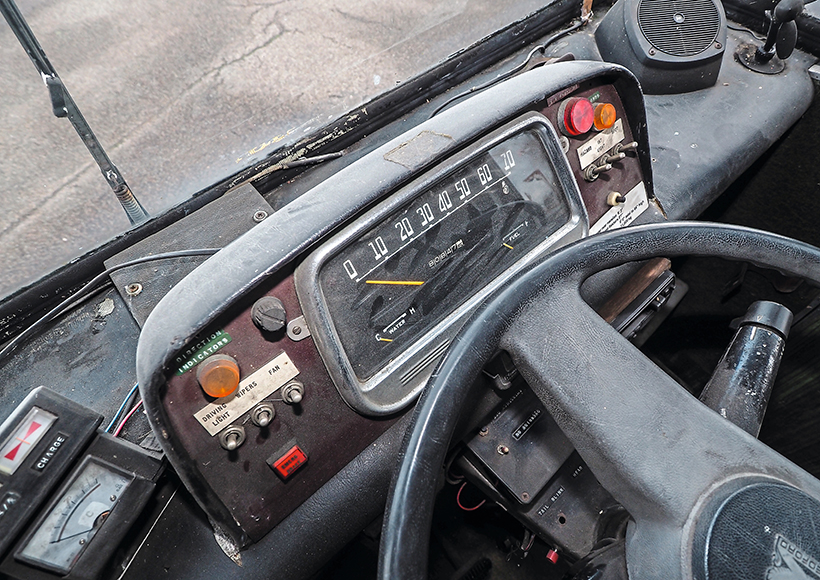
The 80,000-odd recorded on the clock is almost certainly genuine; Outside Broadcast Units didn’t generally cover many miles.
To find out more, go to: becg.org.uk

‘Chinese six’-type wheel arrangement was a unique design feature of the Bedford VAL chassis, along with small wheels.
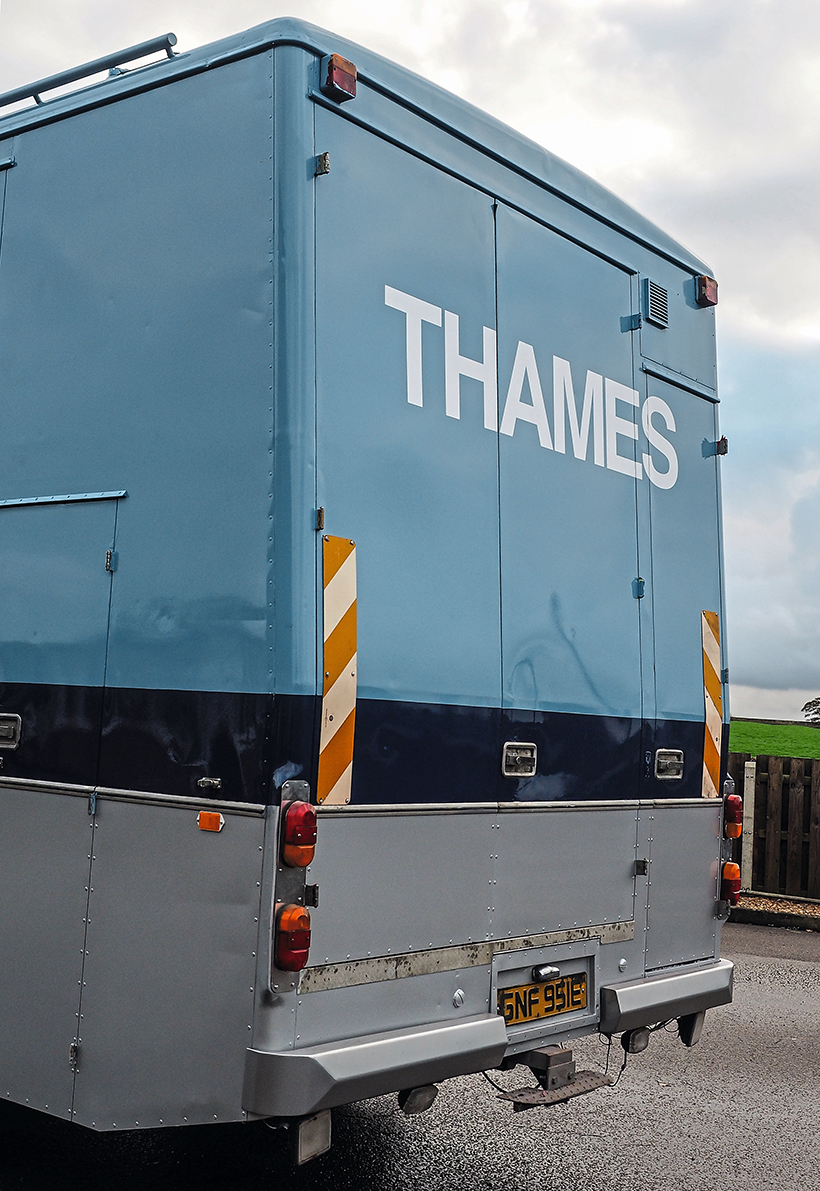
From the rear, and showing the interim livery of ABC colours but ‘Thames’ branding to good effect.
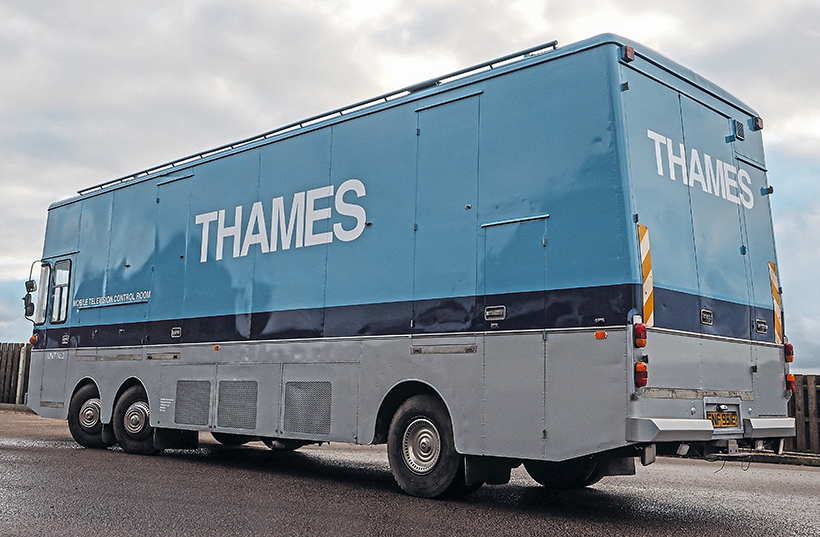
This feature comes from the latest issue of Classic & Vintage Commercials, and you can get a money-saving subscription to this magazine simply by clicking HERE
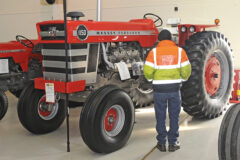
Previous Post
Fantastic classics at the brilliant Tractor World Show!
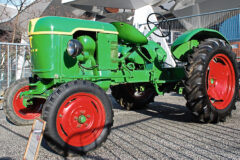
Next Post
Visiting the fantastic Rétromobile show, in Paris



